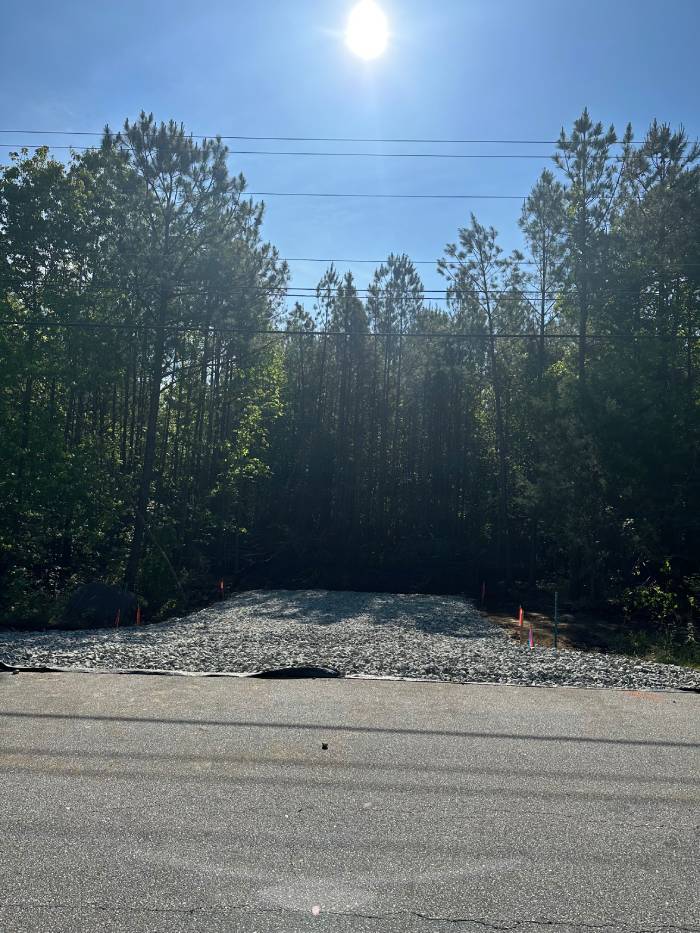Matting
Home / services / matting
Soil erosion can have serious environmental consequences, such as soil degradation, loss of biodiversity, and water pollution. It can also impact human health and safety by causing flooding and landslides.
That’s why it’s important to have a comprehensive plan in place to prevent soil erosion, which may include the use of erosion control matting, sediment barriers, and other best management practices.
Erosion control matting, also known as erosion control blankets, is a cost-effective and environmentally friendly solution for controlling erosion and sediment runoff. These mats are made of natural materials such as coconut fiber, straw, or jute that are woven into a mat and then reinforced with synthetic materials like polypropylene.
Once installed, the erosion control matting helps stabilize the soil, prevent erosion and sediment runoff, and promote the growth of vegetation. The matting allows for the natural infiltration of water, reducing the impact of stormwater runoff on the surrounding environment. As the vegetation grows, the matting gradually decomposes, leaving behind a natural, stable ecosystem.
Erosion control matting is especially useful in areas with steep slopes, areas with little or no vegetation, or areas with high levels of foot traffic. It is an effective solution for erosion control on construction sites, highways, parks, and other areas where soil stabilization is required.
Favland uses erosion control matting as an effective measure on large slopes and banks because it stabilizes the soil and prevents water from eroding it away. This helps to maintain the integrity of the slope and reduces the risk of sediment runoff. In addition, the matting provides an ideal environment for new vegetation growth, which can further stabilize the soil and prevent erosion.
What Is Erosion Control Matting?
Erosion control mats can be made from a variety of materials depending on the specific needs of the project. Natural fibers like straw and coir are biodegradable and are often used for shorter-term projects where vegetation can quickly take hold. Synthetic materials like plastic or composite blends are more durable and can last for several years, making them a better choice for longer-term projects. The choice of erosion control matting material will depend on factors such as slope steepness, project duration, and environmental considerations.
Slopes and inclines are particularly vulnerable to soil erosion due to their angle and exposure to the elements. Erosion control mats provide a protective layer that helps stabilize the soil, prevent runoff, and allow vegetation to establish itself. By using erosion control mats, builders can reduce the risk of soil loss and maintain a healthy and stable landscape.
Expert Slope Protection
Large-grade slopes are often the most vulnerable areas of any construction site to erosion and sediment runoff. Slope matting helps shield the underlying soil from runoff and also helps trap fine sediment particles before they are discharged into a public water source.
Valor Environmental’s erosion control matting for commercial projects can offer builders several benefits and make them SWPPP compliant.

Stabilizes Soil

Promotes New Plant Life

Prevents Sediment Runoff

Affordable

Prevents Soil Erosion

Retains Value of property

SWPPP Compliant

Easy to Install
Erosion Control Matting Service Areas

Favland services home owners, builders, and contractors in the following municipalities:
- Raleigh
- Cary
- Chapel Hill
- Apex
- Holly Springs
- Durham
- Morrisville
- Fuquay-Varina
- Garner
- Zebulon
- Clayton
- Smithfield
- Butner
- Wake Forest
- Youngsville
- Franklinton
- Rolesville
today for your free quote to get started.
